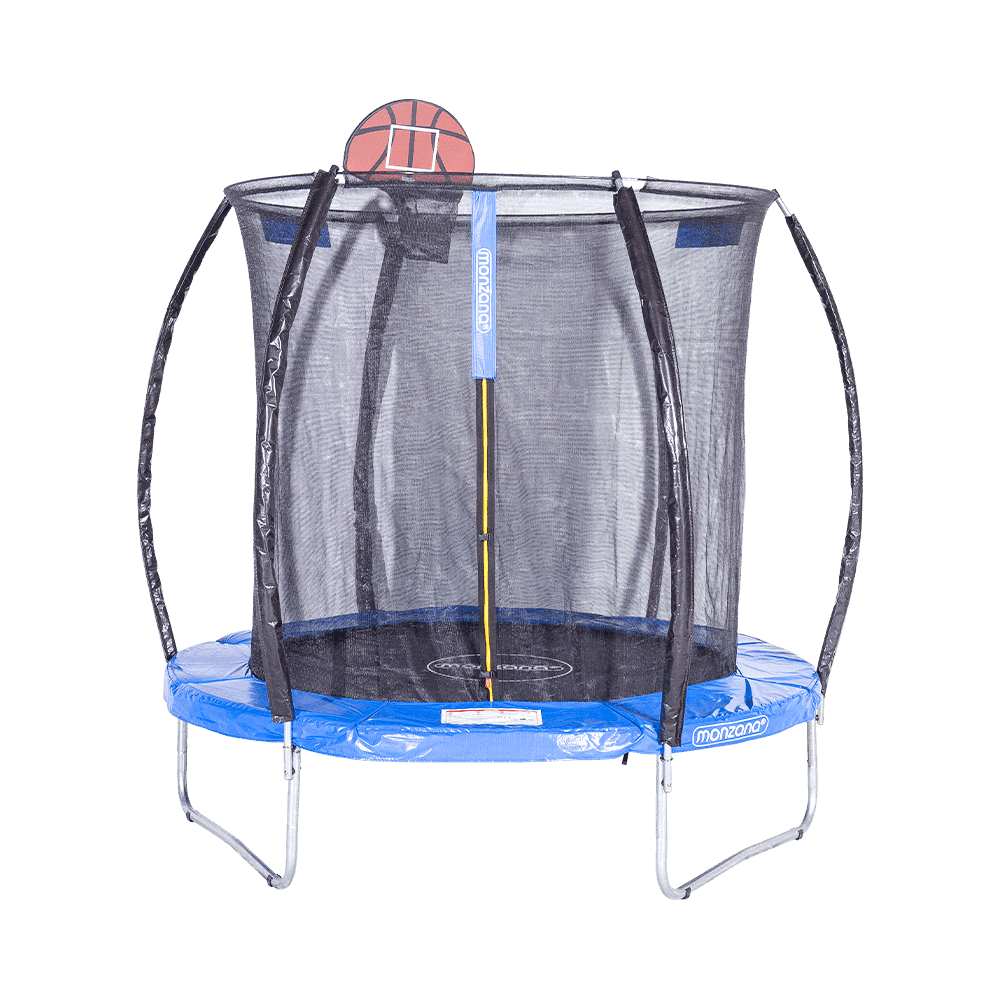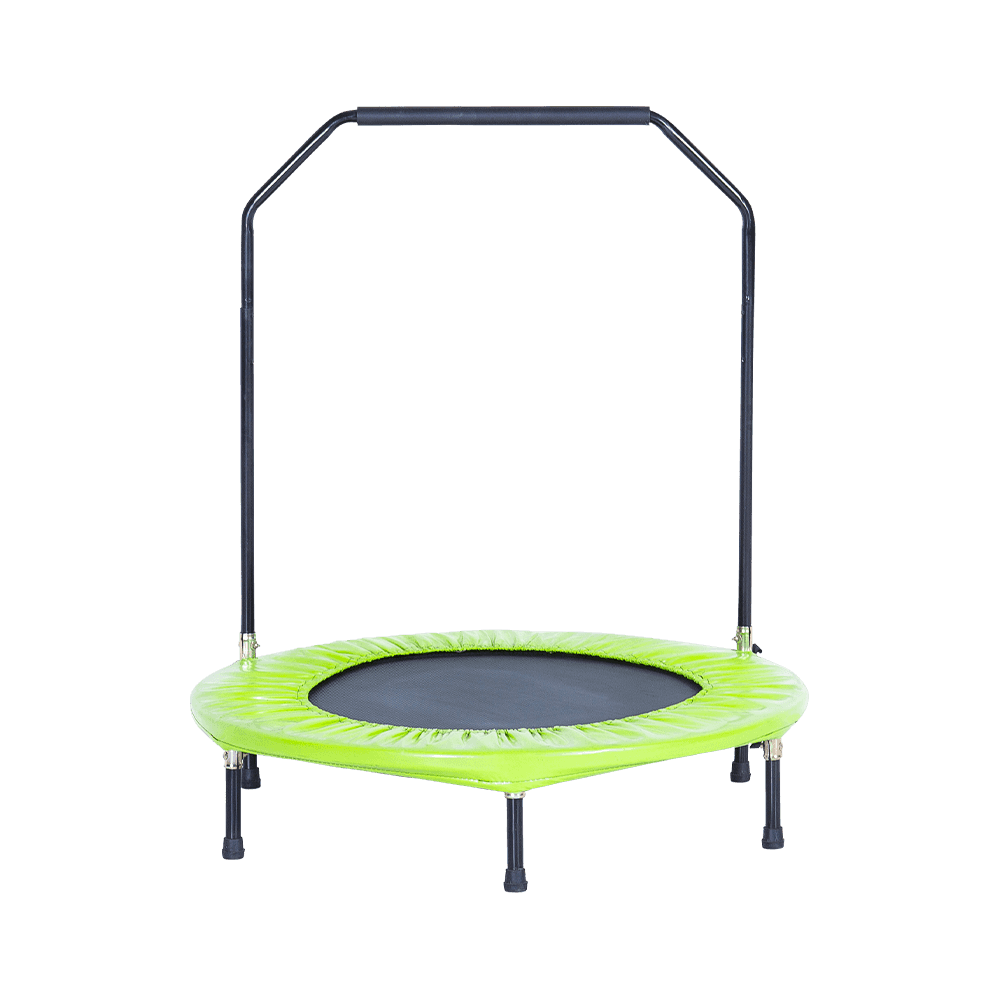Why Choose Round Trampolines?
Round trampolines remain the most popular shape for backyard recreation, and for good reason. Their circular design naturally directs jumpers toward the center, making them the safest option for families with young children. Unlike rectangular models favored by gymnasts, round trampolines with safety nets provide contained bouncing perfect for casual use.
Statistics show that round trampolines account for nearly 68% of residential trampoline sales. Their affordability, ease of assembly, and predictable bounce pattern make them ideal for family backyard fun. The curved frame also allows for more efficient use of space compared to other shapes.
Key Advantages of Round Trampolines:
- Center-focused bounce: Naturally directs users toward the middle
- Budget-friendly: Typically 20-30% cheaper than rectangular models
- Space-efficient: Fits well in most backyards
- Easier assembly: Simple circular frame design
- Safer for kids: Reduced risk of bouncing off at angles
Round Trampoline Size Guide: Finding the Perfect Fit
Choosing the right diameter is crucial for both safety and enjoyment. Here's a detailed breakdown of common round trampoline sizes and their ideal uses:
8-Foot Round Trampolines
Perfect for small yards or young children (ages 3-6). These compact trampolines typically support up to 150 lbs and are great for introductory bouncing. However, their small size limits jumping height and simultaneous users.
12-Foot Round Trampolines
The most popular mid-size option, ideal for elementary-aged kids and small families. A 12ft trampoline with enclosure can support 2-3 children or 1 adult comfortably (250-300 lb capacity). This size offers the best balance between space requirements and bouncing performance.
14-Foot and Larger Round Trampolines
Best for families with multiple children or teens. These large round trampolines (14ft, 15ft, or 16ft diameters) allow for higher jumps and can accommodate 3-4 users simultaneously when following weight guidelines. They require significant yard space (minimum 18ft clearance recommended).
| Diameter | Recommended Age | Weight Capacity | Users | Yard Space Needed |
| 8ft | 3-6 years | 150 lbs | 1 | 10ft diameter |
| 12ft | 6-12 years | 250-300 lbs | 2-3 | 14ft diameter |
| 14ft+ | Teens/Adults | 350-400 lbs | 3-4 | 18ft+ diameter |
Round Trampoline Weight Limits Explained
Understanding weight capacity is essential for safety and longevity of your trampoline. Most quality round trampolines list two weight numbers:
1. Maximum Single User Weight: The heaviest one person should be when jumping alone (typically 200-350 lbs for residential models).
2. Total Weight Capacity: The combined weight of all users at once (usually 50-100 lbs more than single capacity).
What Happens If You Exceed Weight Limits?
- Springs stretch permanently, reducing bounce
- Frame may bend or weld points crack
- Jump mat can tear prematurely
- Safety enclosure poles may lean
- Warranty becomes void
For heavy duty round trampolines look for commercial-grade models with thicker gauge steel frames (1.5mm+), 8+ rows of springs, and reinforced T-sockets at the joints.
Round vs Rectangular Trampolines: Key Differences
While round models dominate residential sales, rectangular trampolines serve different purposes. Here's how they compare:
Bounce Characteristics
Round: Creates a "sweet spot" in the center with progressively less bounce toward edges. Ideal for casual jumping and play.
Rectangular: Provides even bounce across entire surface. Preferred by gymnasts for consistent performance.
Safety Considerations
Round: Natural centering effect makes it harder to bounce toward edges accidentally. Lower injury rates for children.
Rectangular: Allows higher, more powerful jumps. Requires greater skill to control direction.
Space Requirements
Round: Fits well in most yards. Can be placed closer to obstacles (minimum 5ft clearance recommended).
Rectangular: Needs more open space around it (minimum 10ft clearance on all sides).
Price Comparison
Round: $200-$800 for quality residential models
Rectangular: $1,000-$3,000+ for comparable sizes

Essential Safety Features for Round Trampolines
Modern round trampolines incorporate several safety advancements parents should look for:
1. Enclosure Nets
A must-have feature, quality trampoline safety nets should:
- Attach to the frame, not the springs
- Have UV-resistant polyethylene mesh
- Include padded top rail covers
- Feature zippered entry with child-proof latch
2. Spring Covers
Full-circle padding that completely conceals springs and frame. Look for:
- 1.5" thick foam minimum
- Weather-resistant vinyl coating
- Secure tie-down system
3. Frame Design
Quality indicators include:
- Galvanized steel (rust-resistant)
- 1.2mm+ thickness for durability
- W-shaped legs for stability
- No pinch points or sharp edges
4. Anchor Kits
Essential for windy areas, these trampoline ground anchors prevent tipping. Options include:
- Spiral stakes (best for grass)
- Auger-style anchors (for hard soil)
- Sandbag weights (concrete surfaces)
How to Choose the Best Round Trampoline
Follow this 5-step selection process:
Step 1: Measure Your Space
Add 5ft to trampoline diameter for minimum clearance. Consider overhead obstacles (tree branches, power lines).
Step 2: Determine User Needs
Young children need smaller sizes with full enclosures. Teens/adults require larger diameters for higher jumps.
Step 3: Set Your Budget
$300-$500 gets a quality 12ft trampoline. $600+ for premium features like reinforced frames and thicker padding.
Step 4: Compare Key Features
Prioritize safety certifications (ASTM, TÜV), warranty length (5+ years ideal), and replacement part availability.
Step 5: Read Verified Reviews
Check independent review sites for real-world feedback on bounce quality, durability, and customer service.
Round Trampoline Maintenance Guide
Proper care extends your trampoline's life by 3-5 years. Follow this seasonal maintenance schedule:
Monthly Checks
- Inspect mat for tears or stretched stitching
- Test spring tension (all should feel equally tight)
- Verify net attachments are secure
- Clean padding with mild soap and water
Seasonal Maintenance
Spring: Apply silicone lubricant to springs. Check frame for rust spots.
Fall: Remove leaves/debris. Consider a weather cover if storing outdoors.
Winter: In snowy areas, disassemble or remove heavy snow accumulation weekly.
When to Replace Parts
- Mat: Every 3-5 years or when stitching frays
- Springs: When more than 10% are stretched or rusty
- Padding: When foam becomes brittle or vinyl cracks
- Net: If mesh develops large holes or UV damage
Round Trampoline FAQs
Q: Can adults use round trampolines?
A: Yes, but choose larger diameters (14ft+) with higher weight capacities (300+ lbs). Avoid simultaneous use with children.
Q: How long do round trampolines last?
A: Quality models last 5-8 years with proper care. UV exposure is the primary factor in deterioration.
Q: Are round trampolines safer than other shapes?
A: Yes, their center-directed bounce reduces edge contact. However, all trampolines carry injury risks without proper supervision.
Q: Can you install a round trampoline on concrete?
A: Not recommended. Always use on grass or over shock-absorbing surfaces. For hard surfaces, add specialized trampoline mats underneath.
Q: What's the best round trampoline brand?
A: Top-rated brands include Skywalker, JumpKing, and AlleyOOP. Focus on specific model features rather than brand alone.
Final Thoughts
A round trampoline can provide years of healthy outdoor activity when chosen and maintained properly. By selecting the right size for your family, prioritizing safety features, and following maintenance guidelines, you'll create countless joyful memories while minimizing risks. Remember that adult supervision and proper use are just as important as the equipment itself when it comes to trampoline safety.
For families seeking affordable, space-efficient backyard fun, a quality round trampoline with enclosure remains one of the best investments in active play. Just be sure to measure your space accurately, check weight limits, and establish clear safety rules before the first bounce!







